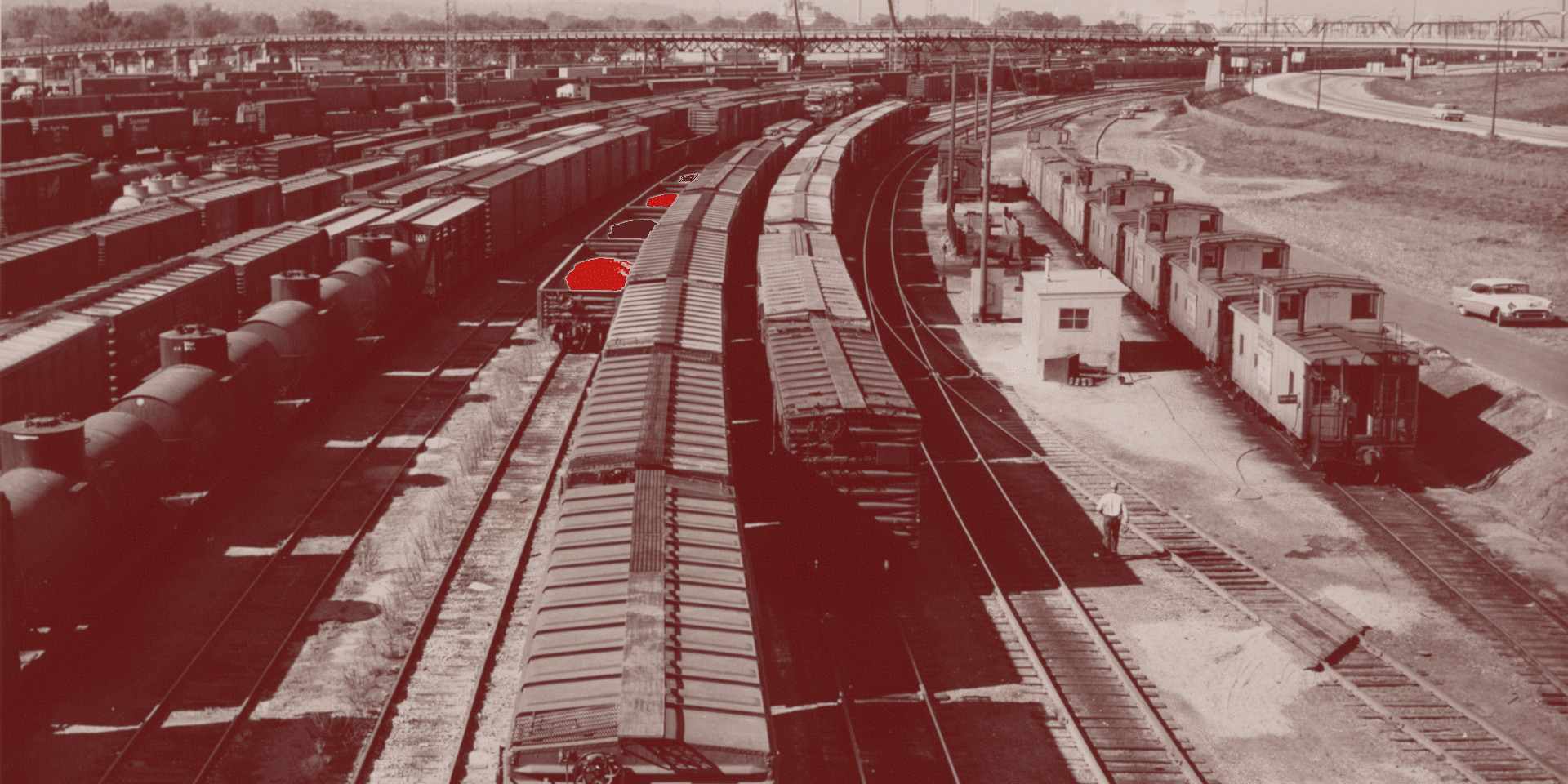
Sabotage
Published February 25, 1911 in Solidarity
Topics: IWW ⭑ sabotage ⭑ transportation and warehousing
Sabotage ranges all the way from “passive resistance” at one extreme to violent destruction of property at the other. It does not include the destruction of machinery in every instance. In the case of “passive resistance” for example, as shown on the government owned railways of Austria, the workers simply obeyed the LAWS OF THE NATION governing traffic to the letter. They took no risks, they observed signals, they did exactly what the law told them to do. As a consequence, the railways were congested with rolling stock and traffic was practically impossible outside of 24 hours. No destruction of property occurred. That was “legal sabotage” and far from being “of no value,” it resulted in getting the men what they wanted.
Again, we see numerous examples of violent destruction of property in craft union strikes in this and other countries. In the early days of English trade unionism, this form of sabotage was employed as a regular system and proved effective under conditions then prevailing. (See Charles Reade's “Put Yourself in His Place.”) In the present state of the workers' superstitious reverence for property (which they do not understand their masters have taken from them) this form of sabotage may be of doubtful value, and often reacts upon the workers with disastrous effect.
Then, once more, we have that form of sabotage now being employed by the workers on the French railways, in which a studied plan is being carried out to “ball up” the service and put it in such a state of demoralization that the employers, public and private, will have to reinstate the workers discharged during the recent general strike. This “pearled sabotage” has proven more effective and terrifying even that the general strike itself; and unlike the latter, it is one-sided, costing the workers nothing and causing enormous losses to the capitalist enemy.
Here then we come to the real point on this question of sabotage: it is a WAR MEASURE, made necessary by the nature of the class struggle.
In the case of individual or craft violence, such for example as the blowing up of a bridge manned by scab labor, or the destruction of a machine in a factory, the understanding or recognition of the class war may be wholly lacking. In that case, the act may be condemned not only by the capitalist, but by the working class as well.
But in the case of “pearled sabotage,” above described, the war measure is apparent. Here the workers deliberately set about to harass their employers by a systematic and well-disciplined plan of campaign. They proceed upon the ever-new principle that “everything is fair in war” and that the weapon they have chosen will bring their masters to terms. . . .
Sabotage, resulting in impairing the traffic of property of a railway system is always “immoral” from a capitalist's standpoint because opposed to his interests. On the other hand, discharging and blacklisting 3,000 railway employees for their activity in a strike is “immoral” from the workers' standpoint; and sabotage becomes a “moral weapon” to remedy that condition. The social democrat who balks at sabotage on the ground that it is an “immoral weapon” in the class war, views that war from the standpoint of the capitalists. Sabotage as a weapon of warfare against the employers is no more “immoral” than taking the first of May as a holiday without asking the bosses for it. Both are manifestations of class instinct and power on the part of the workers. With the possible exception, of course, of a purely individual act of revenge or reprisal which may produce more harm than good. . . .
“Sabotage,” through a new word, is as old as the labor movement. It is now assuming new and complex forms in line with the development of that movement. Viewed as a war measure, sabotage has great possibilities as a means of defense and aggression. It is useless to try to argue it out of existence. We need not “advocate” it; we need only to explain it. The organized workers will do the acting.